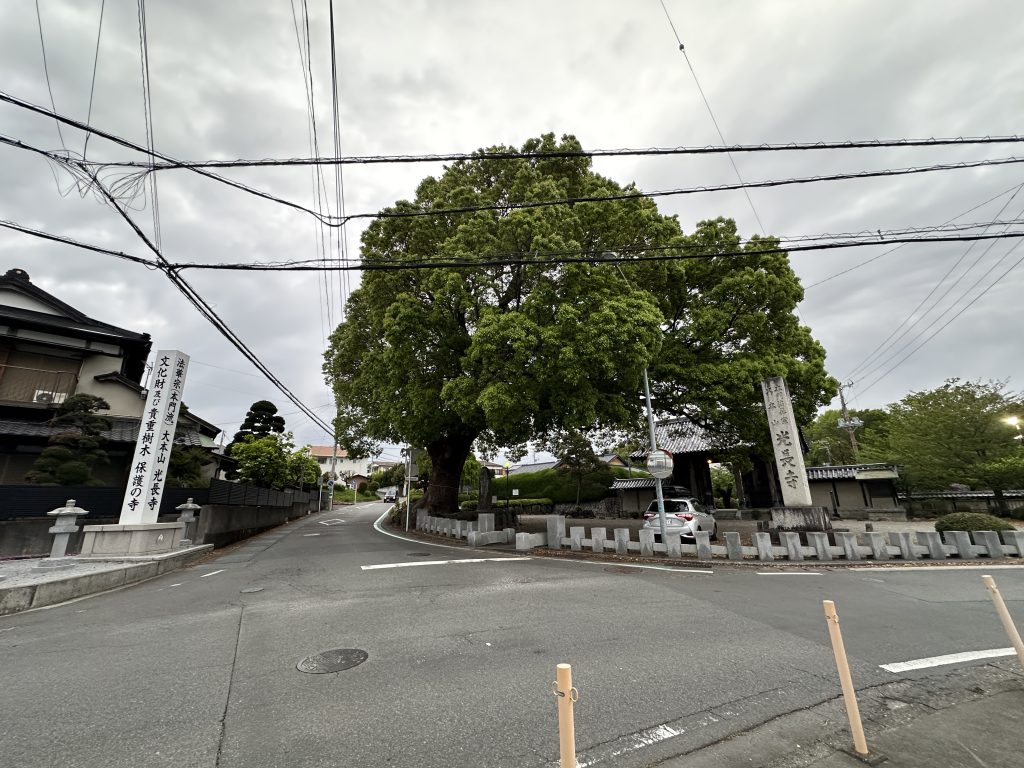第61回 わかる、と、うけいれる
There is an English translation at the bottom of this article. It’s a little bit long, however, please read it when you have time

光長寺に参拝される方から「道が狭いですよねぇ」との意見。たしかに山門前は道が入り組んでいますからその通りなんですが、実は個人的には若干の愛着もありまして。。。
富士山の南側にある愛鷹山。その山麓沿いにある道を「根方街道(ねがたかいどう)」と言います。江戸時代に箱根路ができるまで、この辺りの主要な道、東海道は「裏方路」と「根方路」の2つだったそうです。
(専門家ではないのでめちゃくちゃ割愛)
根方路は当時の永倉駅というところから、光長寺を通り、富士市を通り、蒲原の方まで続く道。永倉駅というのは同じ宗派で末寺の、長泉の蓮華寺さんのあたり。
―――――――――――――――――――――――――――――――――――
2025年、相変わらず宗教やお寺離れだなんだと言われていて、私はお寺と僧侶のせいだと思っています。
「もうお寺はいいよ」と思う方は、お経を読んだりご先祖さまを供養したりということの「大切さ」を理解せず、離れようとしているのか。
ほんとに理解していないのでしょうか。
理解していないんじゃなくて、いろんな生活との優先順位の問題かもしれないし、金銭的、時間的なこともあるでしょう。
そして、そんなことよりもっと、違う要因があるんじゃないか。
ある新聞記事に「日本人はお守りにハサミをいれることができない研究」という見出しがありました。ほら、そういうことですよね。神仏ごとまるっと認めていないわけではないはず。
つまり、拝んだり、お経を読んだり、供養することの「大切さの説明」を増やすだけでは、人々の心は動かない。
心が動かなければ行動には至らないわけで、それは結局、ご先祖さまが喜ぶように、みなさんをお招きすることができないわけで。
この期に及んでなお、
【私たちは悪くない。時代や風潮が悪い。拝むありがたさ、僧侶の尊さ、わかってない。】
なんて、その場で地団太を踏んでいれば、それはそう思われちゃうよ。
なにごとも、一緒に気持ちよく過ごすためには、「説明する」だけではなく、ある程度の「うけいれてもらう」要素が必要ということなのかなぁ。
日蓮聖人が歩かれた道のりには諸説ある中、根方街道の始まりが蓮華寺で、光長寺や、後に開かれるお寺の前を日蓮聖人が歩かれていた。
などと想像すると、狭さや不便さにも、愛着が湧いてしまうのは光長寺の僧侶だからでしょうか。狭さも不便さも、ちょっとだけ受け入れている自分がいます。(良いか悪いかは別)
知り得る情報だけで判断するのではなく、広く共感や失敗、たくさんの喜びを分かち合える場所と僧侶でありたい。
個人的にも、お寺としても、モットーは「目指せ、人間交差点」
People who visit Kochoji Temple say, “The roads are narrow, aren’t they?” It’s true that the roads are winding in front of the temple gate, but I actually have some personal attachment to it…
Mount Aitaka is located on the south side of Mount Fuji. The road along the foot of the mountain is called the Negataka Kaido. Until the Hakone road was built in the Edo period, the main road in this area, the Tokaido, had two routes: the Urakata road and the Negataka road.
(I’m not an expert, so I’ll skip over a lot of details)
The Negataka road runs from Nagakura Station, which passed through Kochoji Temple, Fuji City, and on to Kambara. Nagakura Station is around Rengeji Temple in Nagaizumi, which is a branch temple of the same sect.
It’s 2025 and people are still saying that people are moving away from religion and temples, but I think it’s the temples and monks’ fault.
Those who think, “I’m done with temples,” are trying to move away because they don’t understand the “importance” of reading sutras and making offerings to their ancestors.
Do they really not understand?
It’s not that they don’t understand, but rather it could be a matter of prioritizing various aspects of life, or it could be financial or time.
And I think there must be other factors beyond that.
A newspaper article had a headline that read, “Research shows Japanese people can’t put scissors into amulets.” See, that’s what it means. It’s not that we completely reject gods and Buddhas.
In other words, just increasing the number of “explanations of the importance” of praying, reading sutras, and making offerings won’t move people’s hearts.
If our hearts are not moved, we will not act, and ultimately we will not be able to invite everyone in a way that would please our ancestors.
Even at this point, if we still stomp our feet and think, “It’s not our fault. It’s the times and the trend that are to blame. They don’t understand the blessing of worship or the dignity of monks,” then that’s what people will think.
I guess in order to spend time together comfortably in anything, it’s not just about “explaining” – it’s also necessary to have a certain degree of “acceptance.”
There are various theories about the route that Nichiren Shonin walked, but the Nekata Kaido began at Rengeji Temple, and Nichiren Shonin walked in front of Kochoji Temple and temples that were opened later.
When I imagine this, I feel an attachment to the narrowness and inconvenience of the place, perhaps because I’m a monk of Kochoji Temple. I find myself accepting the narrowness and inconvenience to a certain extent. (Whether that’s good or bad is another matter.)
Rather than judging things based on the information we have, I want this place and the monks to be able to share a wide range of empathy, failures, and joys.
My personal and temple motto is “Aim to be a crossroads for humanity.”